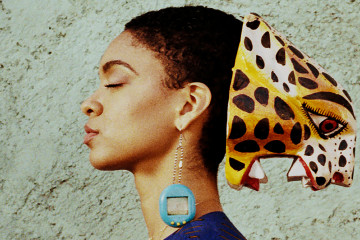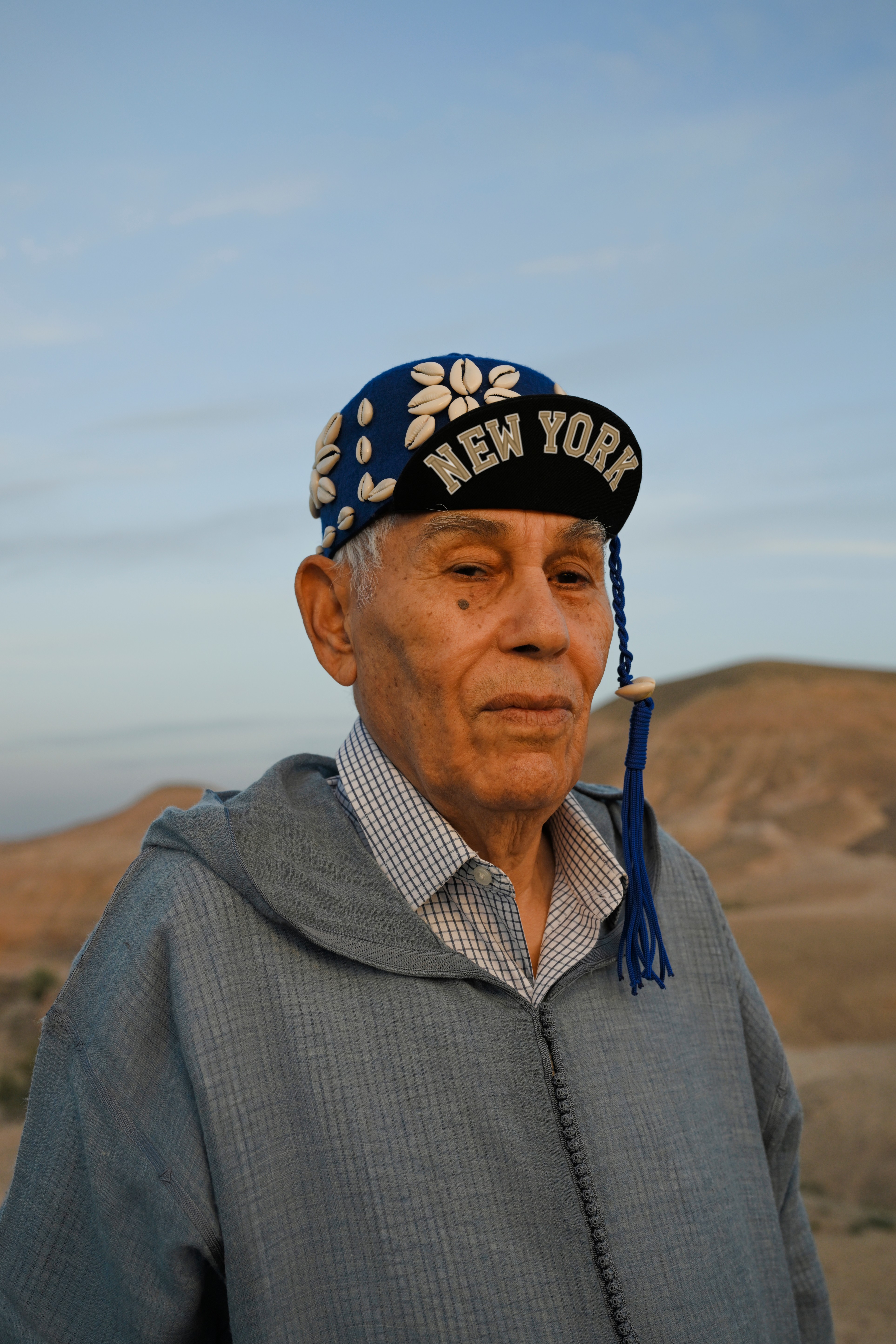

WhatsApp is considered to be the world's most popular messaging application.
With its whopping 2 billion users located in more than 180 countries, the company has founded its reputation on the notion of building relations and connecting people, with a simple touch of a finger, wherever they are on the planet.
In a recent and unusual move, representatives from WhatsApp tapped onto the shoulder of Moroccan-Belgian photographer Mous Lamrabat for artistic collaboration.
Based in Ghent, where Lamrabat was raised, he's a rising star of contemporary photography. Lamrabat creates striking and eclectic portraiture, injected with elements of pop culture, humour, and kitsch. "I love to put things that don't belong together and make them beautiful," he told The New Arab.
"The pictures reveal physical and cultural differences amongst the photographed but beneath that, it really boils down to a common idea, says Lamrabat: The concept of belonging"
His project with WhatsApp, entitled There's No One Like Us, began with a random direct message on Instagram. "I didn't understand what they wanted," he recalled. "They said, 'We want you to create something that we can help with.' I was thinking about what WhatsApp is doing and how important it is."
During an eventful period of two months, Lamrabat travelled to Brazil, India, Mexico, and Morocco with the goal of photographing people who don't live at home anymore.
He realises how the application has changed people's lives, making communication more accessible. "I was thinking about my dad. If he had WhatsApp when he moved to Belgium. It would have been such a different world to him because he was missing his parents the whole time," said Lamrabat.
Travelling around these four major, highly-populated countries was a tiring, eye-opening, and inspiring experience. "For me, it's the first project that's not about the photos. It's about people's stories," he explained. "In Mexico, we had someone from Venezuela and an African who lived in America and moved to Mexico. There was a girl from Ghana living in India all by herself. She didn't see her mom for four years. Everybody has a story, it's crazy."
The pictures reveal physical and cultural differences amongst the photographed but beneath that, it really boils down to a common idea, says Lamrabat: The concept of belonging.
He adds that finding people to shoot for the project was a bit challenging, though it worked out in the end. The shooting process was done with a “let's-have-some-fun" attitude. "We had the most common people. It wasn't like scouting of people doing amazing things, or famous, or have a lot of followers,” he said.
One of the photographed is a Moroccan grandfather, wearing a 'New York' cap while holding a hamburger-shaped telephone. On a girl's shirt, it reads, 'Call Your Mom.' A man smiles towards the camera, while wearing a watermelon, engraved with the telephone symbol of WhatsApp, on his head. A woman in an African robe wears a Tamagotchi gadget as a dangling earring.
There's a playfulness and joyfulness to the colourful images, as well as a sense of emotion and humanity. "We would meet them and ask them if they had something from their motherland that was important to them, even if it was a teddy bear, so they could bring them," Lamrabat explained. "The photos are about the person and their hobbies and obsessions. . . It's not only about where they're from or where they live, but also about what interests them and what keeps them moving forward."
In May, Lamrabat launched this series on his Instagram account to positive feedback. Meanwhile, WhatsApp created a virtual reality exhibition of the imagery for people to explore online. The photographs were also displayed in a community centre in Shoreditch, London.
Lamrabat's interest in photography grew from his adolescence, at around 16 or 17 years old, when he joined his creative brother's photography commissions around town. "He created something from nothing and that was the thing that was really intriguing me," he said.
One day, he was finally able to buy his own second-hand old camera. Taking many snapshots of the family, he became the "annoying" one at home. He also light-heartedly talks about his younger days, when he was "weird" by not being serious enough, having different interests from his classmates and siblings, and cracking inappropriate jokes. "I realised that my head works differently. . . I always had the urge to be a bit of a kid and keep playing." He was the curious kind, where, "if everybody was on the left, I'd be curious about what was on the right."
It seems that it is precisely the fact that he has embraced his weirdness and kept his sense of humour alive that have, in a way, contributed to the popularity of his images, which have been displayed in Art Dubai, 1-54 Contemporary African Art Fair, Photography Museum FOAM in Amsterdam, among others.
"I try to speak through my work," he said. "My work is my language. . . People look much longer at the photos that I take than to listen to my opinions. When people see all my work together, they understand my values and thoughts.”
Rawaa Talass is a freelance journalist focusing on art and culture emerging from the Middle East. Her work has been published in Art Dubai, Arab News, Al Arabiya English, Artsy, The Art Newspaper, Kayhan Life, Dubai Collection, and The National.
Follow her on Twitter: @byrawaatalass







 Follow the Middle East's top stories in English at The New Arab on Google News
Follow the Middle East's top stories in English at The New Arab on Google News


